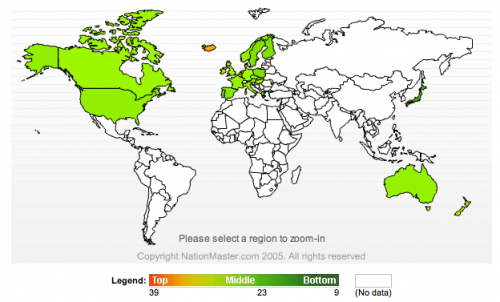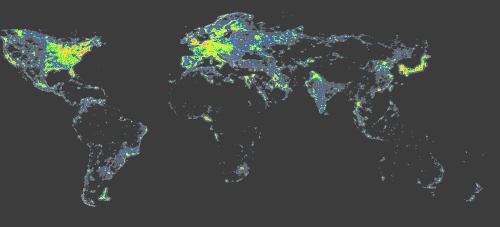One thing that I have grown accustomed to living in the mountains is darkness at night. When I travel to the city, I always have trouble resting from the constant glow of lights. Beyond just making it easier to sleep, a dark room has also been proven to maintain healthy metabolism needed to fight obesity. Now, light in the bedroom has also been linked to increasing women’s risk of breast cancer.

Iceland has the highest rate of breast cancer in the world, with the United States coming in at 17th. Fortunately, if you breastfeed for at least two years, your risk of breast cancer goes down by 50 percent, but new research suggest a light in your bedroom increases that risk.
Medscape reports:
The information on light-at-night exposure was obtained from individual interviews (conducted from 2006 to 2008), and women were asked about bedroom light levels, light coming in the room outside the bedroom, the availability of shutters in the bedroom, and sleeping with the television on. Women were asked to rate their night-time bedroom light levels from 1 to 4, where 1 represented complete darkness, 2 was low light, 3 was average light, and 4 was very strong light (with all the lights on).
The intensity of bedroom light emerged as the strongest predictor of breast cancer, the researchers report. After controlling for education, ethnicity, fertility, and alcohol consumption, light at night in the sleeping habitat significantly increased the risk for breast cancer (odds ratio, 1.22; 95% confidence interval, 1.118 to 1.311; P < .001).
Relying on surveys that require participants to recall the past may not be the most reliable method of data collection; however, this is the third study to find a connection between night lights and breast cancer. I am also wondering if the researchers included genetics as a controlling factor.
The light-at-night theory proposes that the increasing use of electricity to light the night leads to circadian disruption, which accounts for part of the breast cancer burden in the modern world and the rising risk in developing countries. This, in turn, has led to predictions that nightshift workers are at increased risk, blind women are at lower risk, long sleep duration means lower risk, and that community night-time light level would codistribute with breast cancer incidence on the population level.
When placing the breast cancer rate world map adjacent to the world light pollution map, there does appear to be a correlation to the first world. Is such a correlation due to reporting accuracies or actual risks of living in the modern world?

As reported by Medscape, Dr. Stevens explains:
Breast cancer is the one major cancer for which there is no consensus on the main causes, he pointed out. The risk factors that are known so far (reproductive history, diet, exercise, etc.) account for less than 50% of the international variation that is seen in the incidence of this disease. In addition, the incidence is increasing globally for unknown reasons, he added.
I don’t believe light pollution is the sole cause of high breast cancer rates in the First World (I hate this term), but I think it is often overlooked as a source of health problems.
[…] This post was mentioned on Twitter by ecochildsplay. ecochildsplay said: Night Lights Increase Breast Cancer Risk http://t.co/kAF30vF via @ecochildsplay […]